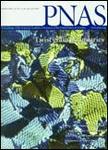版权所有:内蒙古大学图书馆 技术提供:维普资讯• 智图
内蒙古自治区呼和浩特市赛罕区大学西街235号 邮编: 010021

作者机构:Vanderbilt Univ Dept Microbiol & Immunol Nashville TN 37232 USA
出 版 物:《PROCEEDINGS OF THE NATIONAL ACADEMY OF SCIENCES OF THE UNITED STATES OF AMERICA》 (美国国家科学院汇刊)
年 卷 期:1999年第96卷第16期
页 面:8913-8918页
核心收录:
基 金:NCI NIH HHS [CA36544] Funding Source: Medline NIGMS NIH HHS [GM57145] Funding Source: Medline
主 题:氨基酸序列 抗菌药/化学 抗菌药/分离和提纯 抗菌药/药理学 抗真菌药/化学 抗真菌药/分离和提纯 抗真菌药/药理学 念珠菌属/药物作用 细胞存活/药物作用 咖啡/化学 计算机模拟 植物环蛋白质类 胱氨酸 二硫化物类 红细胞/细胞学 红细胞/药物作用 大肠杆菌/药物作用 革兰氏阴性菌/药物作用 革兰氏阳性菌/药物作用 溶血/药物作用 微生物敏感性试验 模型 分子 分子序列数据 肽类 环/化学 肽类 环/分离和提纯 肽类 环/药理学 蛋白质构象 铜绿假单胞菌/药物作用 金黄色葡萄球菌/药物作用 人类
摘 要:Four macrocyclic cystine-knot peptides of 29-31 residues, kalata, circulin A and B (CirA and CirB), and cyclopsychotride, have been isolated from coffee plants but have undetermined physiological functions. These macrocycles and 10 of their analogs prepared by chemical synthesis were tested against nine strains of microbes. Kalata and CirA were specific for the Gram-positive Staphylococcus aureus with a minimum inhibition concentration of approximate to 0.2 mu M. They were relatively ineffective against Gram-negative bacteria such as Escherichia coli and Pseudomonas aeruginosa. However, CirB and cyclopsychotride mere active against both Gram-positive and Gram-negative bacteria. In particular, CirB showed potent activity against E. coli with a minimum inhibitory concentration of 0.41 mu M. All four cyclic peptides were moderately active against two strains of fungi, Candida kefyr and Candida tropicalis, but were inactive against Candida albicans, These macrocycles are cytotoxic and lysed human red blood cell with a lethal dose 50% of 400 mu M. Modifying the Arg residue in kalata with a keto aldehyde significantly reduced its activity against S. aureus whereas blocking the arg in CirA produced no significant effect. The two-disulfide variants and their scrambled disulfide isomers exhibited antimicrobial profiles and potency similar to their native peptides, However, in high-salt assays (100 mM NaCl), few of these macrocyclic peptides, natives or analogs, retained antimicrobial activity, These results show that the macrocyclic peptides possess specific and potent antimicrobial activity that is salt-dependent and that their initial interactions with the microbial surfaces may be electrostatic, an effect commonly found in defensin antimicrobial peptides, Furthermore, their end-to-end cyclic structure with a cystine-knot motif represents a molecular structure of antimicrobials and may provide a useful template for the design of novel peptide antibiotics.